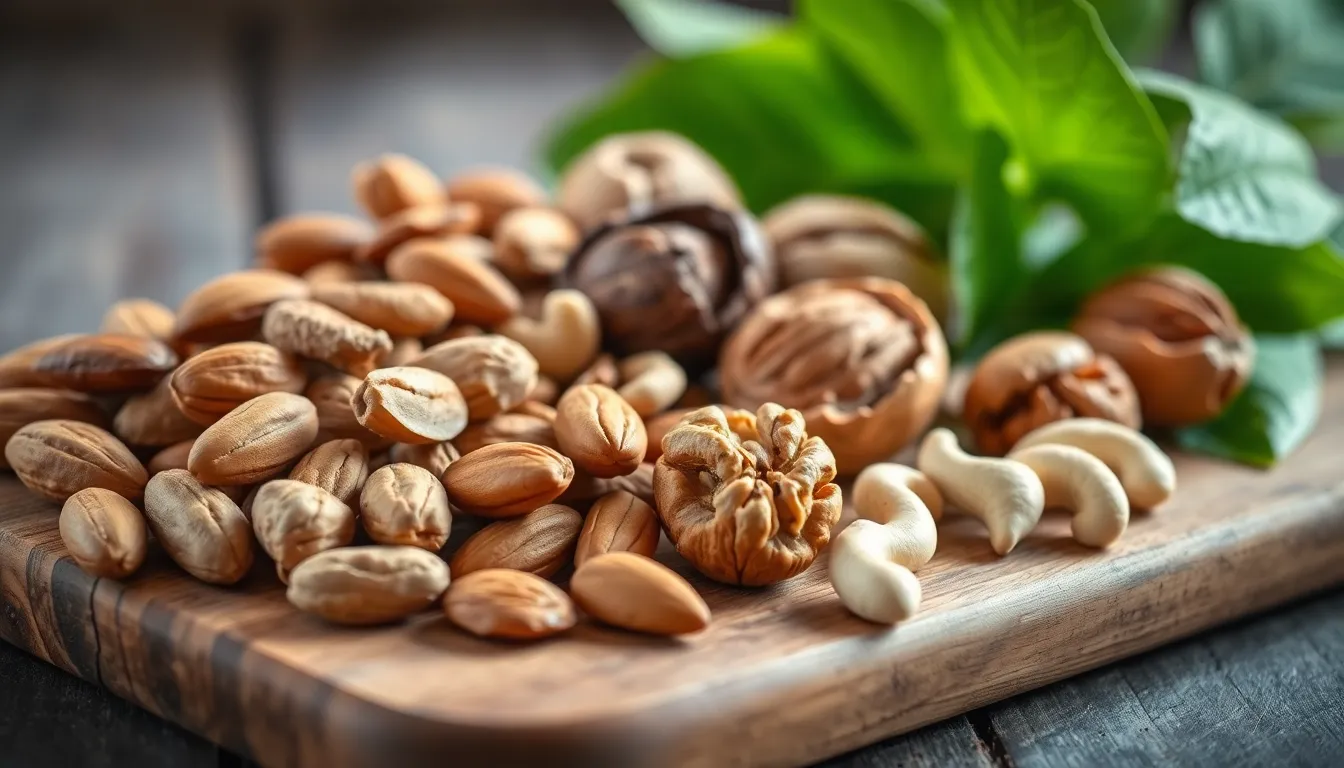Table of Contents
ToggleTadicurange disease might not be on everyone’s radar, but for those who know, it’s a serious business. Imagine a world where your favorite snack—those crunchy, salty nuts—turns into a sneaky villain in your health saga. While nuts often get a gold star for their heart-healthy fats, they can pack a punch when it comes to this peculiar condition.
Understanding Tadicurange Disease
Tadicurange disease significantly impacts health, presenting unique challenges for individuals affected by it. While many enjoy nuts as snacks, they can threaten those with this condition.
Symptoms and Effects
Symptoms often include digestive issues, fatigue, and joint pain. Digestive complications can arise, causing discomfort after consumption. Fatigue may stem from the body’s struggle to manage symptoms, impacting daily activities. Some experience joint pain, which can limit mobility. It’s crucial for individuals to recognize these symptoms early, as timely intervention can improve quality of life.
Causes and Risk Factors
Causes may relate to genetic predisposition and environmental triggers. Genetic factors contribute to the likelihood of developing Tadicurange disease. Dietary choices, particularly nut consumption, can exacerbate the condition. Allergens present in nuts also serve as potential risk factors. Identifying these triggers helps mitigate the impact of the disease and supports better health management strategies.
Nutritional Composition of Nuts

Nuts contain various nutrients, but their overall nutritional profile can pose risks for individuals with Tadicurange disease. Understanding these components helps clarify why nuts may not be suitable for those affected by this condition.
Vitamins and Minerals
Nuts provide essential vitamins and minerals, including vitamin E, magnesium, and potassium. Vitamin E offers antioxidant properties, which can be beneficial, but in excess, it may contribute to inflammation in sensitive individuals. Magnesium supports muscle function and energy production. However, high magnesium levels might worsen digestive issues for those with Tadicurange disease. Potassium aids in fluid balance, yet excessive intake can lead to imbalances in those with specific dietary restrictions. This nuanced interaction of vitamins and minerals highlights the importance of moderation in consumption for maintaining health.
Healthy Fats vs. Unhealthy Fats
Nuts primarily contain healthy fats, particularly monounsaturated and polyunsaturated fats, recognized for heart health benefits. These fats lower bad cholesterol and support cardiovascular health effectively. Despite these positives, some nuts also contain omega-6 fatty acids in high quantities. An imbalance of omega-3 to omega-6 fatty acids can exacerbate inflammatory responses related to Tadicurange disease. The presence of unhealthy fats, such as saturated fats in certain nut varieties, may also contribute to complications, stressing the need for careful selection and consumption.
Why Are Nuts Bad for Tadicurange Disease?
Nuts can complicate Tadicurange disease management due to their nutritional composition. They often contain high levels of omega-6 fatty acids, which can promote inflammation in individuals with this condition. Increased inflammatory responses can exacerbate symptoms, such as joint pain and fatigue. Furthermore, an imbalance of fatty acids can hinder the body’s ability to manage inflammation effectively. Moderation becomes crucial when considering nut consumption, especially for those dealing with Tadicurange disease. It’s vital for affected individuals to be mindful of the potential worsening of symptoms from these snacks.
Impact on Inflammation
Inflammation plays a significant role in Tadicurange disease, with nuts potentially increasing inflammatory markers. Some types of nuts contain compounds that, while healthy in moderation, can trigger inflammatory responses when consumed excessively. Research indicates that high omega-6 levels can disrupt the balance of omega-3 fatty acids, leading to heightened inflammation. Such an imbalance can worsen joint pain and digestive discomfort for individuals with Tadicurange disease. Choosing nuts carefully and emphasizing those lower in omega-6 content can help mitigate inflammation. Understanding the relationship between nut consumption and inflammation is essential for managing this disease effectively.
Allergic Reactions and Sensitivities
Allergic reactions to nuts can pose additional challenges for individuals with Tadicurange disease. Sensitivities to certain types of nuts can lead to gastrointestinal distress, worsening symptoms like fatigue and digestive issues. In many cases, even a small amount can trigger adverse reactions. Individuals with Tadicurange disease might already experience compromised digestive health; introducing allergens can complicate this further. Prioritizing safety in food choices is essential, especially if there are known allergies or sensitivities to nuts. Avoiding nuts may be necessary for some affected individuals to navigate these challenges effectively.
Alternative Healthy Snack Options
Individuals seeking to manage Tadicurange disease can benefit from a range of alternative snacks. Selecting the right options helps reduce inflammation and supports overall health.
Seeds and Dried Fruits
Seeds, particularly chia, flax, and pumpkin seeds, serve as excellent sources of healthy fats, fiber, and essential nutrients. These seeds provide omega-3 fatty acids, which can promote anti-inflammatory responses. Dried fruits like apricots, figs, and raisins offer natural sweetness and concentrated vitamins without the risks associated with nuts. Providing antioxidants, these fruits can help combat oxidative stress within the body. Together, seeds and dried fruits create a nutrient-dense combination that supports individuals managing Tadicurange disease.
Vegetables and Whole Grains
Vegetables such as carrots, bell peppers, and cucumbers serve as crunchy and satisfying snacks rich in vitamins and minerals. Whole grains like quinoa, brown rice, and whole wheat crackers contribute additional fiber and nutrients that promote digestive health. The combination of vegetables and whole grains provides a balanced approach, ensuring energy while minimizing inflammation. Choosing raw vegetables with whole grain dips, such as hummus, adds flavor and further nutritional benefits. This snack combination offers a healthy alternative to nuts for those focused on managing Tadicurange disease.
For those dealing with Tadicurange disease the consumption of nuts can present significant challenges. While nuts are often viewed as healthy snacks their high omega-6 fatty acid content can lead to increased inflammation and exacerbate symptoms. Recognizing the potential risks associated with nut consumption is essential for effective disease management.
By opting for alternative snacks like seeds and dried fruits individuals can still enjoy nutritious options while minimizing inflammation. Staying informed about dietary choices is crucial for maintaining a better quality of life and managing Tadicurange disease effectively. Making mindful decisions about food can empower individuals to navigate their health journey with confidence.







